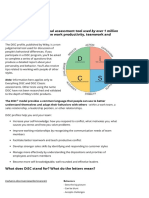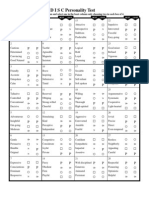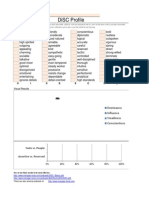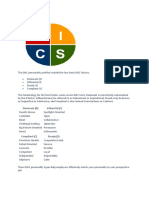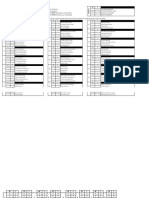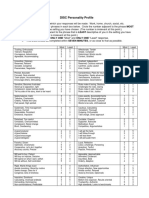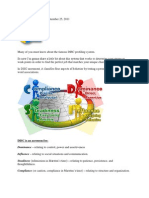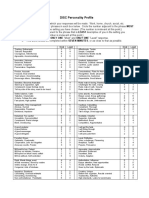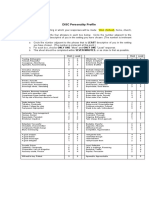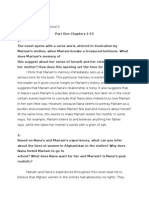78% found this document useful (9 votes)
4K views12 pagesDISC Full Version
This document provides instructions for taking a DISC personality profile assessment. It involves choosing the most and least descriptive phrases for your personality from sets of four options. The assessment is meant to be completed quickly, within 7 minutes, and provides a score across four scales: Dominant, Influencing, Steady, and Compliant. Upon completing all questions, the user clicks a tab to see their results and an overview of the four DISC styles.
Uploaded by
rieno urbandCopyright
© © All Rights Reserved
We take content rights seriously. If you suspect this is your content, claim it here.
Available Formats
Download as XLSX, PDF, TXT or read online on Scribd
78% found this document useful (9 votes)
4K views12 pagesDISC Full Version
This document provides instructions for taking a DISC personality profile assessment. It involves choosing the most and least descriptive phrases for your personality from sets of four options. The assessment is meant to be completed quickly, within 7 minutes, and provides a score across four scales: Dominant, Influencing, Steady, and Compliant. Upon completing all questions, the user clicks a tab to see their results and an overview of the four DISC styles.
Uploaded by
rieno urbandCopyright
© © All Rights Reserved
We take content rights seriously. If you suspect this is your content, claim it here.
Available Formats
Download as XLSX, PDF, TXT or read online on Scribd
/ 12


















